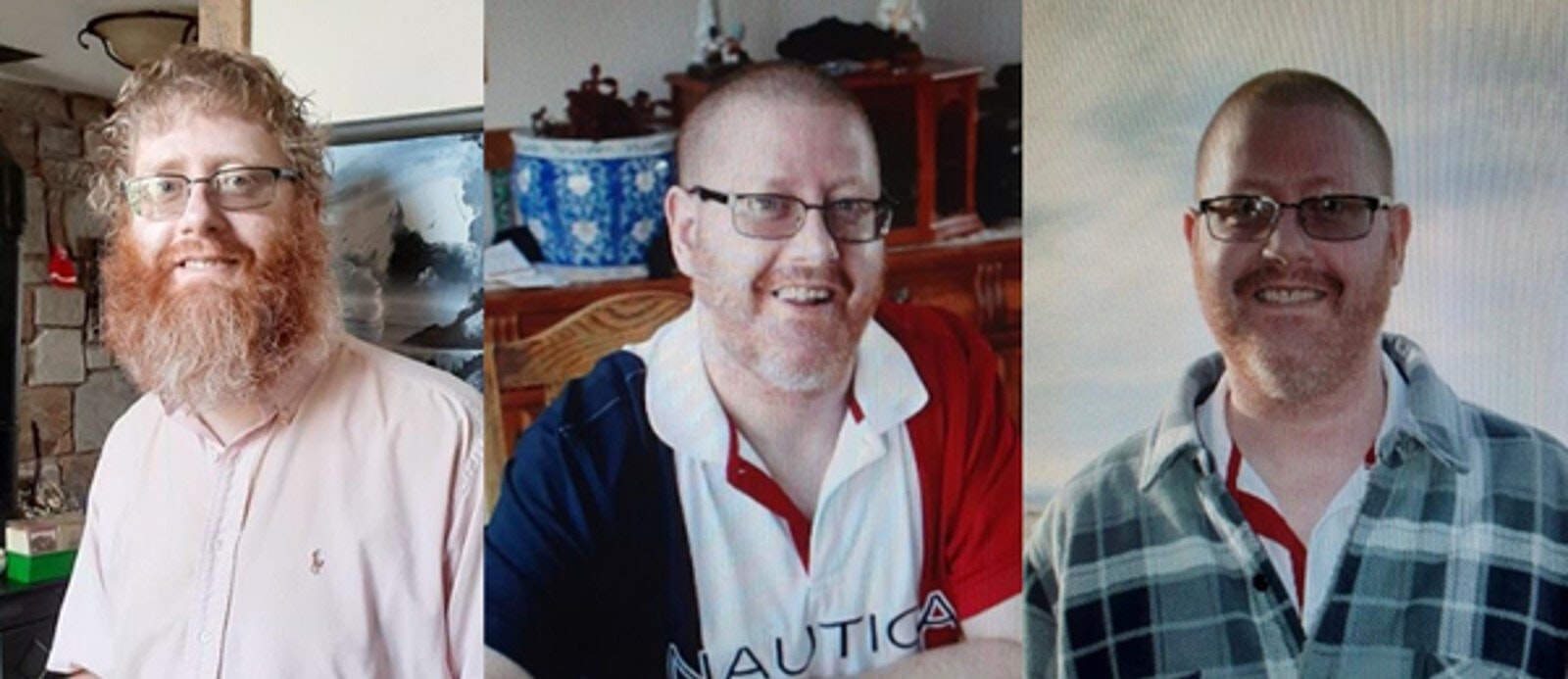The disappearance of a Casper man in July 2020 is bringing to the forefront the problems of finding people with mental illness who are reported missing.
Paul Pedry was 43 when he disappeared in July 2020. At the time, the Casper man had been feeling depressed and lethargic.
That afternoon, Paul’s parents Dave and Danna Pedry had accompanied the 43-year-old Casper man, who was also bipolar, to his psychiatric appointment.
Paul’s doctor had been concerned about his slow speech and depressed state and sent Paul to the lab for blood work. The tests later revealed he had dangerously low thyroid levels because he had failed to renew his thyroid prescription.
After picking up Paul’s renewed prescriptions and some fast food, his parents dropped him off at his downtown Casper apartment.
Once home, Paul called his sister about a family matter and later tried to visit a friend. But the friend was at work, so the two talked briefly by phone. That was the last time anyone heard from Paul.
His disappearance left a lot of questions and even more unknowns.
After his disappearance, Paul’s debit card was found in an alley near his apartment and turned in to the police, who put it in lost and found, according to Danna.
No transactions were made on Paul’s card. Danna hadn’t realized how badly things had gotten for her son until visiting his apartment after his disappearance.
The sink in her normally tidy son’s apartment was stacked with unwashed dishes and there was no food in the refrigerator.
His low thyroid levels had slowed Paul down considerably, the doctor told Paul’s parents, which accounted for his lack of energy and all-around lethargy and depression.
Paul had been diagnosed as bipolar during his junior year in college. This illness prevented him from achieving his longtime dream of entering the priesthood because of the manic episodes he would suffer when he stopped taking his medication.
Despite his mental disorders, Paul lived an independent life, holding a job and renting his own apartment.
But shortly before he disappeared, he had quit his job at a Casper store during a manic episode, telling the manager he’d received a better employment offer with the Central Intelligence Agency, one of his frequent delusions when hypomanic.
“That job was his lifeline,” Danna told Cowboy State Daily, adding she could not blame the store’s manager for being intolerant of her son’s excuses and fanciful fantasies.
Given his depression at the time of his disappearance, there are questions about whether he might have taken his own life, but his parents and family adamantly believe Paul would not do such a thing given his strong religious convictions.
“In some ways I think Paul had given up,” Danna said. “He thought his family had given up on him and he was discouraged that the drugs he was given weren’t working and were so drastic. But he wouldn’t take his own life.”
His older brother Michael agreed and noted Paul had left for short periods in the past – usually on the guise of joining the CIA. These handful of episodes didn’t last long and concluded with Paul inevitably checking himself into a hospital and calling his family.
The family also pointed out Paul had no money and no access to transportation because his car was in the shop at the time he disappeared.
Lastly, his family said, Paul was too lethargic to get far. Though he’d shown a slight bounce after taking that first dose of thyroid medication, he was still very tired. Paul felt he was being tested by God, his brother said.
In an earlier conversation that Michael thinks was spurred by his brother’s medical condition, Paul spoke about being in a state of “spiritual desolation” in which he felt lonely and that he was being tested. Such statements were not atypical for his philosophical and thoughtful brother, according to Michael.
“Nothing he said indicated he had any thoughts of suicide,” Michael said. “This was an exceptional time for him, and he wouldn’t have made that statement lightly.”
Paul always called his family, Danna noted. He was very close to his siblings and parents. Danna suspects foul play.
Maybe her son was a victim of a botched robbery or some other form of senseless violence, likely in the alley near his apartment that he often took on his walk to church. She believes that’s where her son had been heading that night.
When Paul was feeling better, he was a formidable presence at nearly 6 feet, 3 inches and 230 pounds. That night, however, he would have been too weak to put up a fight.
Danna is not sure if there was any video surveillance footage that might answer some questions or if the alley where the card was found was ever checked out.
The Casper Police Department said there’s no evidence to support the theory that Paul was jumped and killed, according to Detective Shannon Daley. She said investigators searched the alley and interviews were conducted.
The only thing Danna does believe is that Paul is no longer alive, prompting the family to issue an obituary for Paul and hold a requiem mass this summer.
“I think God took him,” Danna said, “but I just don’t know how.”
Complicated problem
Cases like Paul’s speak to the difficulty that both families and law enforcement have in tracking down missing people with mental disabilities. In 2021, there have been 131 missing adult reports taken by the Casper police, but only one person is currently considered legally missing.
Of these missing person cases, Daley estimated, at least 75% have some sort of addiction or mental illness.
The fact is that mental illness is a growing problem in general, according to the National Alliance of Mental Illness (NAMI), with about one in five adults in the United States, 21%, experiencing mental illness in 2020, per NAMI data.
In 2018, 28,244 people with mental disabilities, roughly 15% of Americans with mental disorders, were reported missing, according to a Congressional Research Service report.
Missing person cases involving adults with mental illnesses can be some of the hardest cases to solve, according to private investigator Thomas Lauth of Lauth Investigations Worldwide.
In a 2018 article, Lauth compared the “intricate layered mesh of mental health issues combined with the complexities of a missing person investigation” a “maddening puzzle that plagues both the heart and the mind.”
In addition, unlike children, adults have a legal right to “disappear,” posing a problem for law enforcement agencies forced to deal with strapped budgets and competing priorities.
In such cases, law enforcement has to consider three variables, according to Byron Oedekoven, executive director of the Wyoming Association of Sheriffs and Chiefs of Police: determine if the adult disappeared on his or her own volition, got physically hurt or lost or whether there foul play was involved.
It’s not a crime to be missing, Oedekoven said. Adults can choose.
There are also health and other privacy issues at stake in cases where the adult wants to be gone. The second two variables, however, require swift and fast action in order to protect that missing person.
“Sorting out the critical nature is to deal with it effectively from the onset,” Oedekoven said, noting that Wyoming law enforcement officers are trained to do so. Apart from notifying law enforcement, one of the best things people can do, he said, is spread the word that someone is missing.
In Wyoming, unlike other states, families do not have to wait 24 hours to report someone missing, and all unsolved missing person investigations remain active until there is an outcome.
“Part of it is public awareness,” Oedekoven said, noting that the media typically focuses on the high-profile cases involving women and children to the exclusion of other cases.
Raising awareness
Heightened awareness in the community is one way to get out more tips and cooperation,
Oedkoven added.
To this end, Casper resident Desirée Tinoco, administrator of the Missing People of Wyoming website, is working with law enforcement and state officials to create a statewide missing person database. Wyoming is currently one of the few states in the nation not to have one.
In recent months, the Wyoming Department of Criminal Investigation’s (DCI) has revamped its missing person database to make it more up-to-date and user friendly and is working alongside Tinoco in efforts to create a uniform statewide database for missing people.
Another resource that families have is the non-profit We Help the Missing, a group of volunteer private investigators across the country who offer their services free of charge and take on both new and cold cases.
Amanda Waldron, a Casper-based private investigator with We Help the Missing, would also like to see other alert systems put in place similar to the “Amber Alert” triggered by the disappearance of a child.
For instance, she said, the “Silver” alert system issues advisories for missing adults 65 and older and younger adults who are developmentally disabled, cognitively delayed or with other mental disabilities.
A purple alert, such as the one signed into law in Florida this summer to notify missing people with mental health disabilities, would also be helpful, Waldron said, as would alerts for runaways and possible victims of human trafficking.
In the meantime, Paul’s family has no recourse but to rely on tips and law enforcement.
Since he’s been gone, Paul’s mom has received one tip which did not pan out. Still, the family would like to know what happened to Paul last summer.
Paul is described as a 6-foot, 3-inch white male with red hair and dark-framed glasses who weighs around 220 pounds. He was last seen in the area of Wolcott and 12th in Casper wearing silver/gray shorts, tennis shoes and a short-sleeve T-shirt.
Anyone with tips or information is asked to contact the Casper Police Department at (307) 235-8278 or the NaMus tip hotline at (833) 872-5176.





